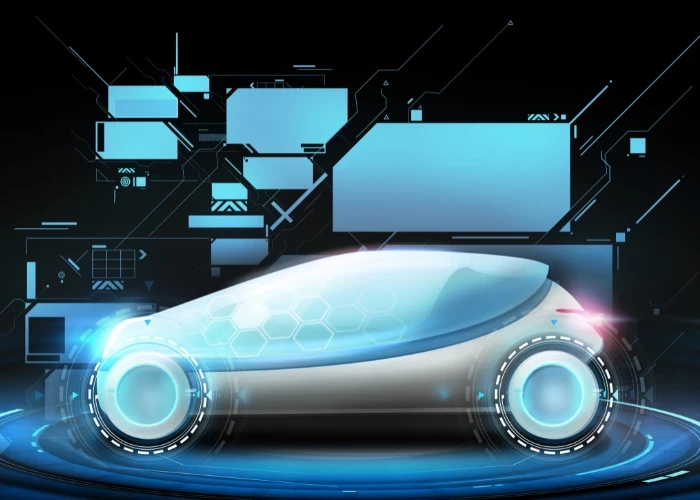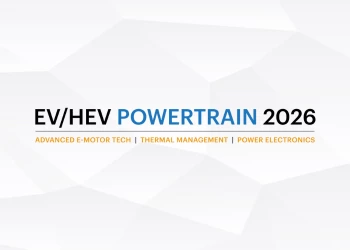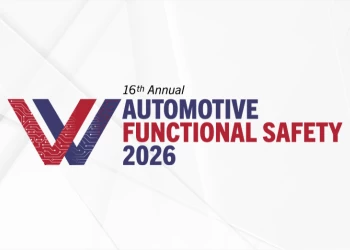E-Drive bearings reach another level
Add bookmarkSwitching from ICE power to eMotors and fuel tanks to batteries is not the work of a moment – the advent of electric vehicles requires a ground-up rethink of all of a car’s components.
For example, with electric motors capable of spinning at 30,000rpm, high performance bearings are required in order to keep up with the high speeds. In order to adapt to requirements of EVs, bearing technology is changing, with suppliers looking to provide OEMs with more powerful and durable components.
What are the main developments in optimised bearings and how can they boost electric motor performance?
OEMs have required a significant quality and performance jump in order to be able to offer their customers reliable EVs. Therefore, suppliers are redesigning bearings and the polymer cage so the whole set-up can endure the higher speed, acceleration and temperature that characterize electric motor operation.
Further, the higher speeds demand more effective lubrication with superior oils that can maintain their viscosity.
In this regard, Dr Farrukh Qureshi, technical fellow for The Lubrizol Corp, asserts that “several drivetrain configurations would exist depending on vehicle configuration and design.
“If the motors are embedded in the transmission or axle where they are immersed in oil, the fluid’s electric and thermal conductivity will be of importance. However, there is lack of consensus among OEMs on targets for electric or thermal conductivity.”
He adds “Friction and wear protection of gears, bearings and seals will also be important. Motor output speeds may exceed 25,000rpm, which would require that associated bearings, seals and other components are properly lubricated.”
Hybrid ceramic bearings
Steel bearings are currently the industry standard for electric motors. However, whilst the eMotor and the inverter can offer great efficiency, one feature that can affect conventional steel bearings is the high-frequency voltage switching of the inverter that produces current leakage, particularly at high motor speeds. This current sometimes runs through the actual bearings causing surface pitting and, shortly afterward, a catastrophic failure of the component.
According to CeramicSpeed's Anders Thormann, “Electrical current passing over the bearing will also create micro welds in the passage from the rolling element to the race, weaken the steel and damage the raceway – a phenomenon referred to as current erosion. The problem is very much accelerated by the vast use of frequency converters working at still-higher frequencies and hence creating common mode voltages difficult to insulate exactly because of the high frequent nature of the same.”
This is where hybrid or ceramic bearings come in, as they do not conduct electricity.
With the property of being current insulating, hybrid bearings are 40 percent less dense when compared to those made of steel. This allows them to operate in lower temperatures, require less lubrication and have up to ten times the lifetime of steel bearings.
According to a study of the Danish Institute of Technology (DTI), due to the reduced friction in a ceramic hybrid bearing, the running temperature could be anywhere between 10 and 40 kelvin cooler than the equivalent standard bearing in the same motor. This enables a longer service life of both the grease, the bearing and ultimately the motor.
“Ceramic hybrid bearings will not suffer from any electrical current as the ceramic material has a higher electrical resistivity than that of air, creating an efficient insulating distance of the full ball diameter. In comparison with the 0.1mm of insulation in a bearing insulated by the means of coating, this makes a world of difference. Simple as that – problem solved,” says Thormann.
Tapered Roller Bearings
Another bearing technology taking the EV industry by storm is the tapered design. It has been developed to improve efficiency and reduce size, as bearings with this design are small and offer low energy loss. Further to this, tapered roller bearings can bear relatively large loads for their size, and sport inside rollers that are held in place by a rib, making contact with the roller's end.
However, tapered roller bearings are vulnerable to damage from sliding contact if they lack lubrication. This makes it difficult to significantly simplify lubrication systems and reduce the amount of oil used.
To overcome lean lubrication conditions, NSK developed a special cage that retains and distributes oil in fine grooves via capillary action. “The oil is held in the cage near the roller end, and when lubrication is low, the oil seeps out of the fine grooves to the area most in need of lubrication.”
According to the company, “After startup and initial driving, which lubricates components, EVs often shut off the oil pump to conserve power, resulting in an overall reduced lubrication supply. There are also challenges to starting the vehicle at lower temperatures, such as a dramatically increased oil viscosity leading to difficulty in supplying oil to the bearings.”
NSK says these bearings achieve seven times higher seizure resistance after shutting off the oil pump compared to conventional tapered bearings.
Further, “Gearbox bearings lubricated by oil bath systems can be redesigned to use a more efficient oil spray system. Compared to [its] conventional tapered bearings, [its] new product requires 95 percent less lubrication oil to prevent seizure. This enables a smaller pump to be used and eliminates churning loss.”
Needle Roller Bearings
As reported by Eureka Magazine UK, NSK has developed a silent needle roller bearing that the firm claims reduces noise by a third of that of conventional, comparable bearings.
In order to reduce noise, a high-precision machining method is used to give the ends of the needle rollers a curved arc. This also makes the bearings capable of supporting heavy loads. As a result, the solution is perfect for electrical components mounted in vehicles with extremely quiet interiors, such as electric and hybrid vehicles.
The switch to electric vehicles has certainly driven an industry-wide rethink when it comes to componentry. Even the humble bearing has been forced to shape up for its new role as part of the EV powertrain as, without reliable operation, customers will vote with their feet, and without quietness, EVs lose an important USP. It’s no surprise therefore that suppliers are racing to innovate, so we’ll watch the space for new developments as and when they happen.


















